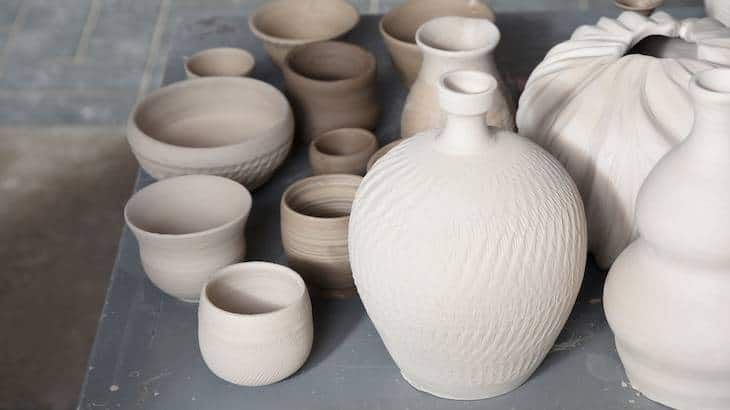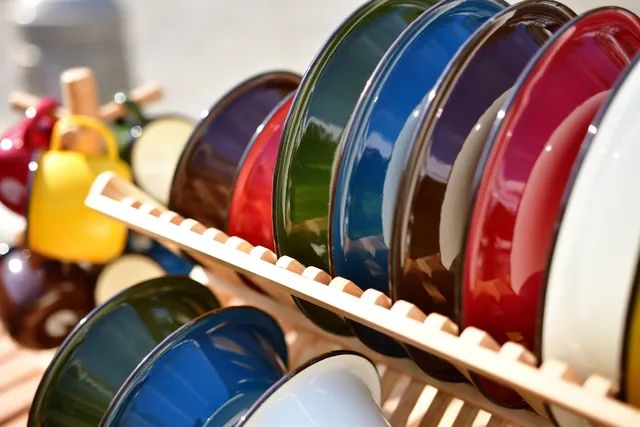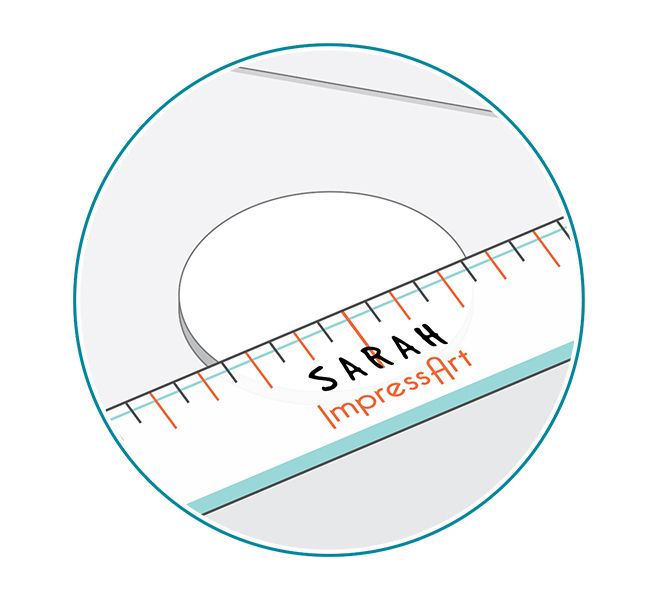Can Kaolin Clay Be Used As Face Mask?
What is Kaolin Clay?
Kaolin clay, also known as China clay, is a type of clay mineral that has been used in skincare and cosmetic products for centuries. The name comes from “Gaoling” or “Kao-Ling” – a hill in China where it was mined for centuries. Kaolin has a soft, white, chalky appearance and is derived from weathered volcanic rocks and minerals that have decomposed over thousands of years.
Kaolin clay is found in abundance in various parts of the world including China, Brazil, Australia, India, and the United States. The largest deposits that are mined for commercial use are found in central Georgia. Kaolin has many uses including in ceramics, medicine, coated paper, as a food additive, in toothpaste, and in skincare and beauty products.
In skincare, kaolin clay is used as an absorbent, natural ingredient that helps remove impurities and toxins from the skin. It also gently exfoliates, stimulates circulation, soothes irritated skin, and gives skin a refreshed appearance. When mixed with water or other ingredients into a paste, kaolin makes an excellent facial mask for various skincare benefits.
Benefits of Kaolin Clay for Skin
Kaolin clay provides several benefits when used on the skin in a facial mask:
Absorbs excess oil – Kaolin clay is able to absorb excess oil on the skin due to its ability to adhere to the skin. This makes it effective for those with oily skin or prone to breakouts, as it helps remove oil and impurities that can clog pores.
Exfoliates dead skin cells – The particles in kaolin clay gently exfoliate by removing dead skin cells and debris from the surface of the skin. This leaves the skin looking smoother and brighter.
Removes impurities – In addition to absorbing excess oil, kaolin clay is able to cling to dirt and impurities on the skin and remove them. This helps deep clean and detoxify the skin when used in a facial mask.
Using Kaolin Clay as a Face Mask
Making a kaolin clay face mask is simple. All you need is kaolin clay powder and water or another liquid like rose water or apple cider vinegar.
To make a basic kaolin clay mask:
- Mix 1-2 tablespoons of kaolin clay powder with just enough water or other liquid to form a smooth paste. The consistency should be thick but spreadable.
- Apply the clay mask evenly all over your clean face, avoiding the eye area.
- Let the kaolin clay mask sit on your skin for 10-15 minutes until completely dry.
- Rinse the mask off thoroughly with lukewarm water.
There are a few tips for getting the most out of a kaolin clay mask application:
- Always start with clean skin free of makeup, oil, or dirt which can prevent the clay from adhering properly.
- Use an old makeup brush or your fingers to apply a smooth, even layer across your skin.
- Allow the clay mask to dry completely on your face rather than rinsing off early. This allows the full benefits to be absorbed.
- Remove the clay mask gently with water. Scrubbing or aggressive rinsing can irritate skin.
- Follow with a moisturizer after rinsing as clay masks can be drying.
Skin Types Kaolin Clay Masks Work Best For
Kaolin clay masks can provide benefits for all skin types, but are especially effective for oily, acne-prone skin.
Oily, acne-prone skin
Kaolin clay is great for oily, acne-prone skin because it helps remove excess oil and sebum from the skin’s surface. It gently exfoliates dead skin cells and debris that can clog pores and lead to acne. The absorbent properties of kaolin clay help draw out impurities from the skin. Using a kaolin clay mask regularly can help control acne breakouts and prevent future ones.
Normal skin
Those with normal skin can also benefit from using kaolin clay masks. The mild exfoliation helps remove dead skin cells, dirt, and oil buildup that can dull the complexion. Kaolin clay improves circulation and leaves normal skin looking radiant and smooth. It balances oil production and prevents the skin from becoming too oily or too dry.
Sensitive skin
Kaolin clay masks are usually well-tolerated even by those with sensitive skin. The clay is gentle and non-abrasive. It doesn’t strip the skin of moisture, so sensitive skin will not end up feeling dry or irritated. Always spot test kaolin clay masks first to check for any adverse reactions. Mix the clay with water instead of harsh ingredients like apple cider vinegar.
Other Clays vs. Kaolin
Kaolin clay has some similarities and differences compared to other popular clays used in skincare and DIY masks. Here is how kaolin stacks up against some other common choices:
Bentonite Clay
Like kaolin, bentonite clay can draw out impurities from the skin. However, bentonite has stronger absorbent properties and is better for oily or acne-prone skin types. It also contains trace minerals that kaolin lacks. The main downside is that bentonite has a higher potential to dry out skin.
French Green Clay
French green clay provides more minerals than kaolin and is also very absorbent. It shares kaolin’s benefits for sensitive skin since it is non-drying. French green clay may be preferred for improving skin tone, elasticity, and radiance due to its high mineral content.
Rhassoul Clay
Rhassoul clay comes from Morocco and contains a blend of minerals, trace elements, and nutrients. It is extra gentle and good for all skin types. Rhassoul shares some of the oil-absorbing effects of kaolin but is not as drying. It also provides more conditioning properties to hydrate the skin.
Precautions When Using Kaolin Clay
When using kaolin clay masks, it’s important to take some basic precautions:
Patch test first – Before applying a kaolin clay mask to your entire face, do a patch test on a small area of skin to check for any irritation or allergic reaction. Apply a small amount to the inside of your wrist or behind your ear and leave on for at least 24 hours.
Avoid getting near eyes – Be very careful to avoid applying kaolin clay around the delicate eye area, as it can be drying and irritating. Use petroleum jelly as a barrier around the eyes.
Rinse off thoroughly – Once your kaolin clay mask has dried and you are ready to remove it, be sure to rinse your face very thoroughly with warm water. This ensures you get all of the clay off your skin.
DIY Kaolin Clay Face Mask Recipes
Kaolin clay masks can be beneficial for all skin types when used properly. Here are some simple DIY kaolin clay mask recipes tailored for different skin needs:
For oily skin
If you have oily or acne-prone skin, kaolin clay can help absorb excess oil and sebum while gently exfoliating. Try this clarifying kaolin clay mask:
- 2 tablespoons kaolin clay
- 1 tablespoon apple cider vinegar
- 1 teaspoon tea tree essential oil
Mix the ingredients into a smooth paste and apply to clean skin. Leave on for 10-15 minutes before rinsing. Use 1-2 times per week.
For dry skin
To prevent kaolin clay from over-drying your skin, combine it with moisturizing ingredients like honey, yogurt or aloe vera gel:
- 2 tablespoons kaolin clay
- 1 tablespoon raw honey
- 1 tablespoon plain yogurt
Combine the ingredients, apply to clean skin and leave on for 10-15 minutes. Rinse with warm water and follow up with a nourishing moisturizer. Use 1-2 times per week.
For sensitive skin
Dilute kaolin clay with soothing ingredients if you have sensitive or easily irritated skin. Try this gentle recipe:
- 1 tablespoon kaolin clay
- 1 tablespoon aloe vera gel
- 1 teaspoon chamomile tea (cooled)
Mix together the ingredients, apply a thin layer to clean skin and leave on for 5-10 minutes before rinsing off. Use 1-2 times per week.
Buying Kaolin Clay
Kaolin clay can easily be found at most health food stores or online. When buying kaolin clay, there are a few things to look out for:
- Quality – Make sure to buy kaolin clay that is labeled as “cosmetic grade” or “high purity”. This ensures the clay has been properly processed and cleaned.
- Color – High quality kaolin clay will have a white or off-white color. Avoid clay that looks yellow or brown, as this indicates impurities.
- Texture – The texture should be smooth and finely milled. Coarse or gritty clay can be harder on sensitive skin.
- Scent – Good quality kaolin clay has a mild, earthy smell. If the clay has a strong odor or chemical scent, it may not be as pure.
- Origin – Opt for kaolin clay sourced in regions known for quality deposits, like the Kauai region of Hawaii or Brazil.
- Certified Organic – For safest use on facial skin, look for kaolin clay certified organic by organizations like USDA or EcoCert.
Buying from reputable natural cosmetic brands helps ensure you get a high purity kaolin clay suitable for DIY facial masks. Beauty stores specializing in natural products are another good option.
How Often to Use a Kaolin Clay Mask
When using a kaolin clay mask, it’s generally recommended to limit usage to 1-2 times per week. Kaolin clay can be drying for some skin types, so using it too frequently may cause irritation. For those with sensitive or dry skin, it’s best to use a kaolin clay mask even less often – once every 7-10 days.
Listen to your skin when deciding how often to use a kaolin clay mask. If your skin feels tight or dry after using it, cut back on frequency. In general, 1-2 times weekly is sufficient to get the benefits of purifying pores, removing excess oils, and improving skin tone and texture.
Keep in mind that kaolin clay masks are intended to be occasional use products, not daily skincare. Using a kaolin clay mask once or twice a week is enough for most people to see results. Be cautious not to over-dry or irritate skin with too much clay mask usage.
The Takeaway
In summary, kaolin clay offers a variety of benefits for skin when used in a face mask. The gentle but powerful detoxifying and cleansing properties make it ideal for those with oily, acne-prone, or dull skin. The key is using a kaolin clay mask correctly and safely.
Kaolin clay masks are best suited to those with oily or acne-prone skin types. The clay can help remove excess oil, dirt, and impurities without over-drying. They also work well for those looking to brighten dull skin or minimize the appearance of pores.
To use a kaolin clay mask effectively, start with clean dry skin and apply a thin layer avoiding sensitive areas like eyes and lips. Leave on for 10-15 minutes and rinse with warm water. Only use 1-2 times per week to avoid drying out skin. Patch test before first use to check for allergies. Seek advice from a dermatologist if pregnant, breastfeeding, or have any other concerns.
When used properly, a kaolin clay mask can safely provide an easy at-home facial treatment with detoxifying and skin-brightening results.





